Transactions feature overview
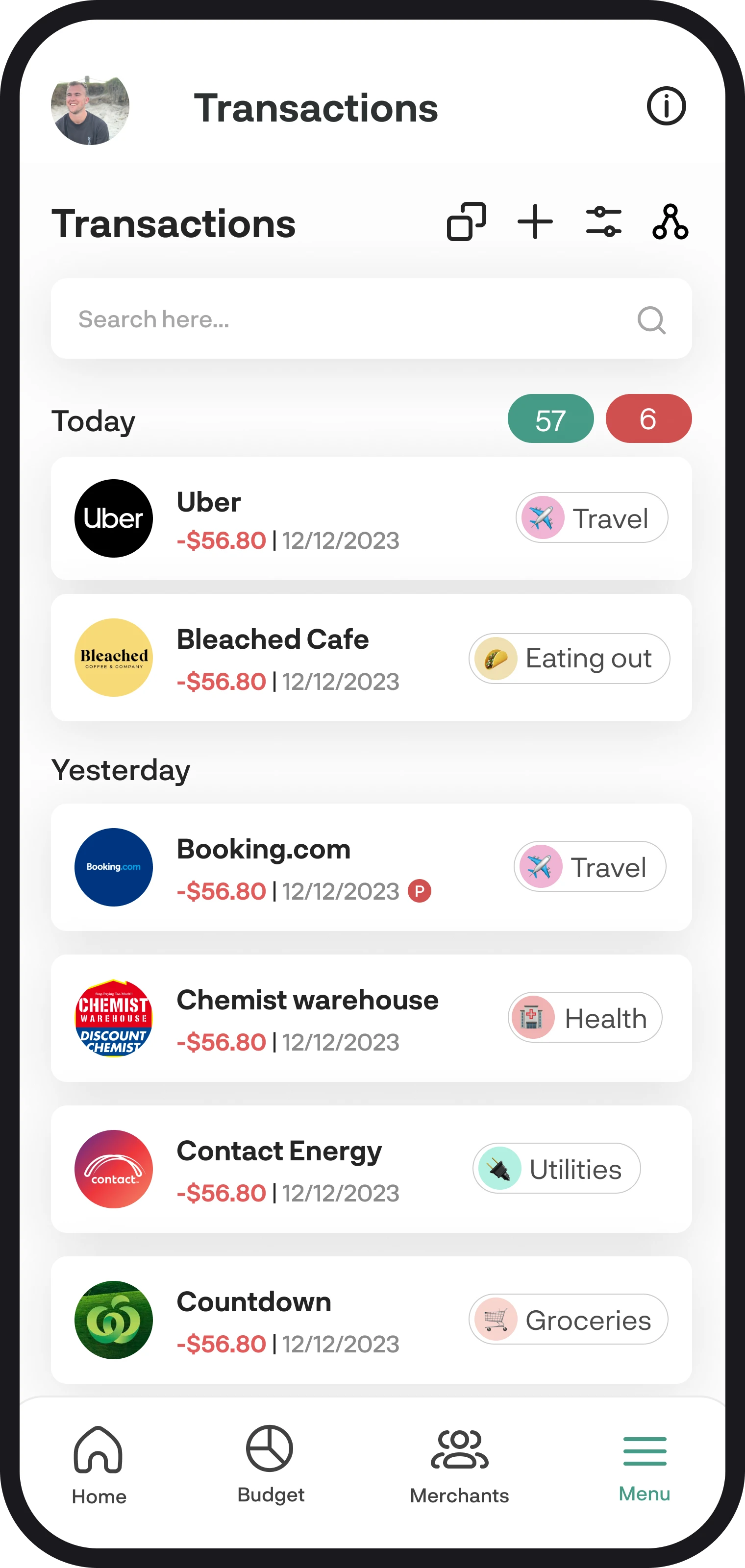
Transactions feature overview
Your transactions are one of the main features of the app to ensure all the other features and widgets work correctly and display all of your information. In this overview, we'll go through all the bells and whistles and how to get the most out of them.
1. A quick summary
Your transaction data is provided by Akahu; when you connect your accounts, we load the last 12 months of your transactions. While we load in your transactions, we automatically categorise them. Your transactions display all your basic information, like amount, date, and name, along with enriched information like category and merchant. Although we try to categorise most transactions, we can't auto-categorise everything, which will require some manual categorisation by you.
2. Your transaction & transaction details
You can view all of your transactions here. To load more, simply keep scrolling down, and more will load in. You can change the category of your transaction by tapping on the category, which will then show a pop-up menu of options to select from.
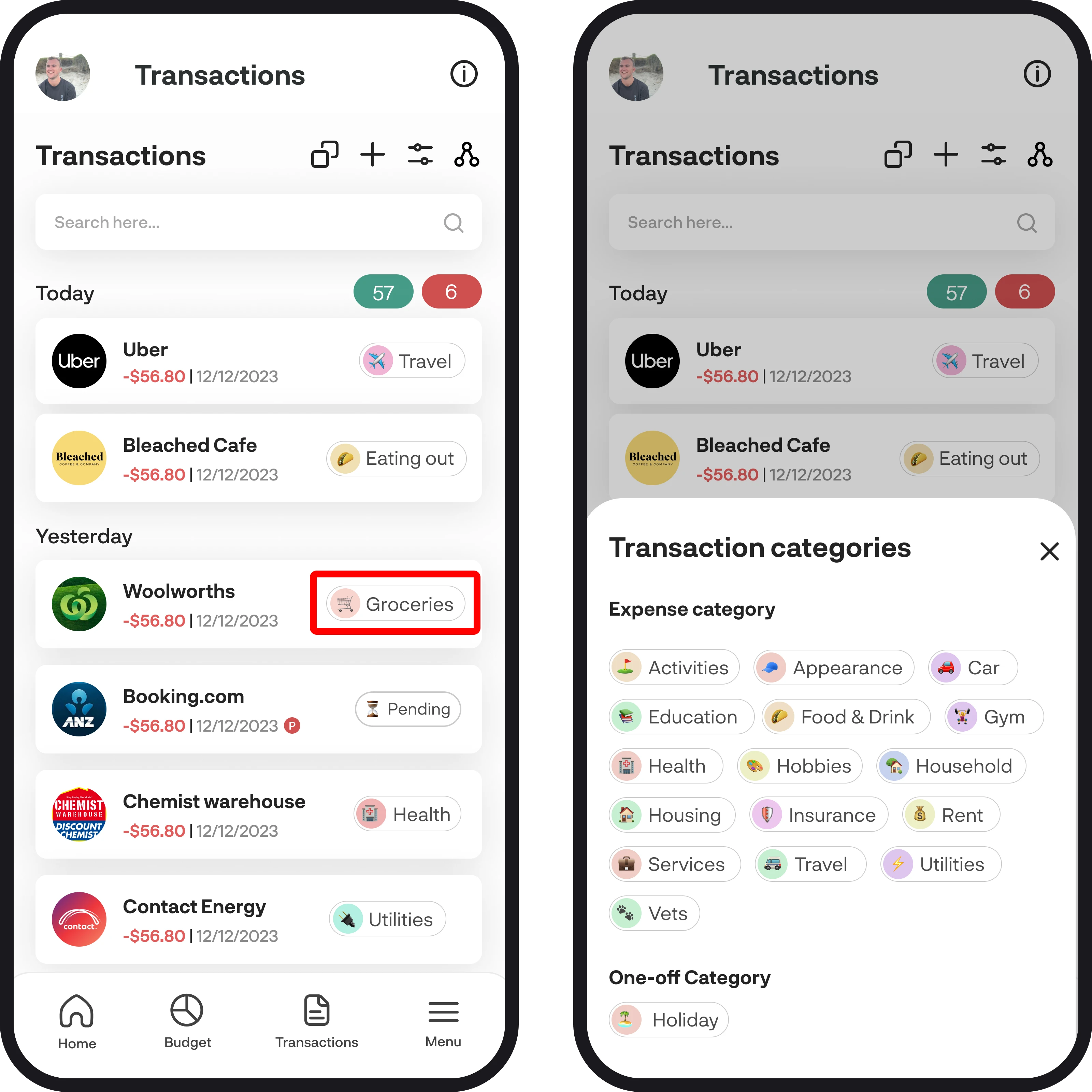
If you'd like to view the details of your transaction, simply tap on it. Transaction details also include the subcategory for the transaction. Subcategories are categories that sit below the main category and provide a more specific category definition of where you've spent money.
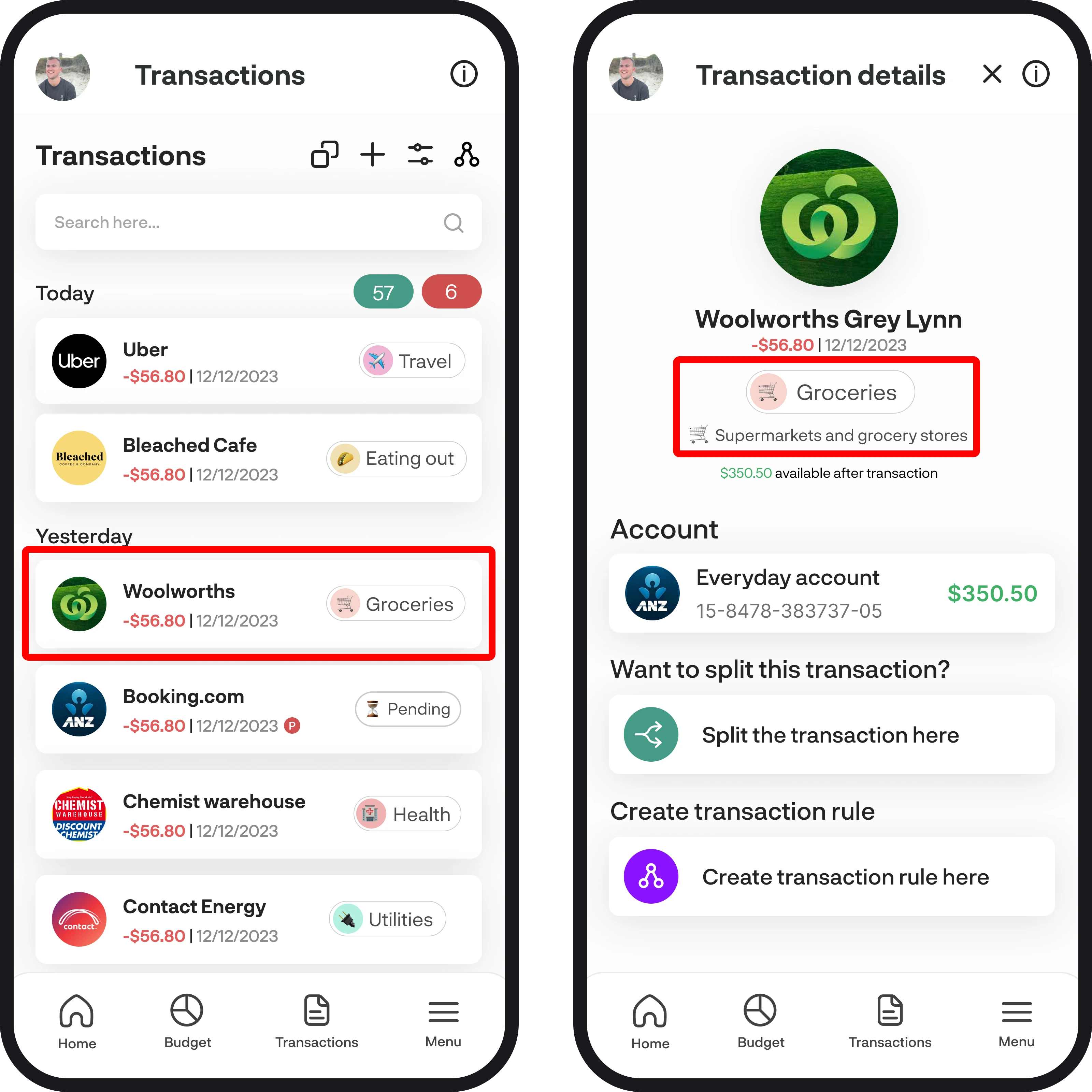
3. Pending transactions
Your pending transactions will also show here, pending transactions will have a red 'P' symbol and the category will also be assigned as 'Pending'. Pending transaction categories cannot be changed until the transaction has been processed.
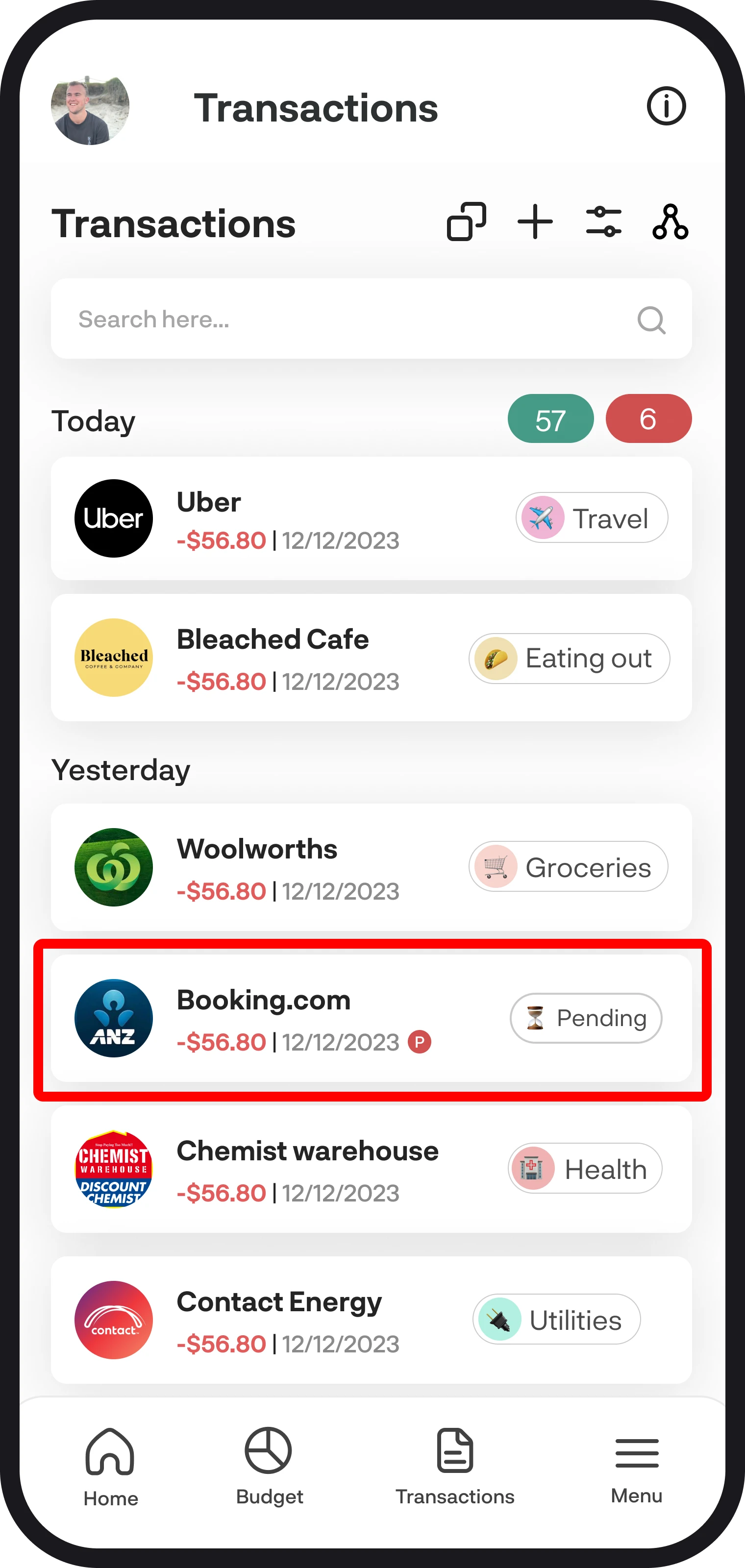
4. Categorise income transactions to expense categories
Say you purchase an item for $100 and categorised that transaction to 'Shopping', then you decide you to return it and get a refund. Instead of having to categorise the $100 refund transaction as 'One off' you can switch and categorise it back to the expense category 'Shopping'. This means it balances out your spend amount and makes reporting metrics accurate.
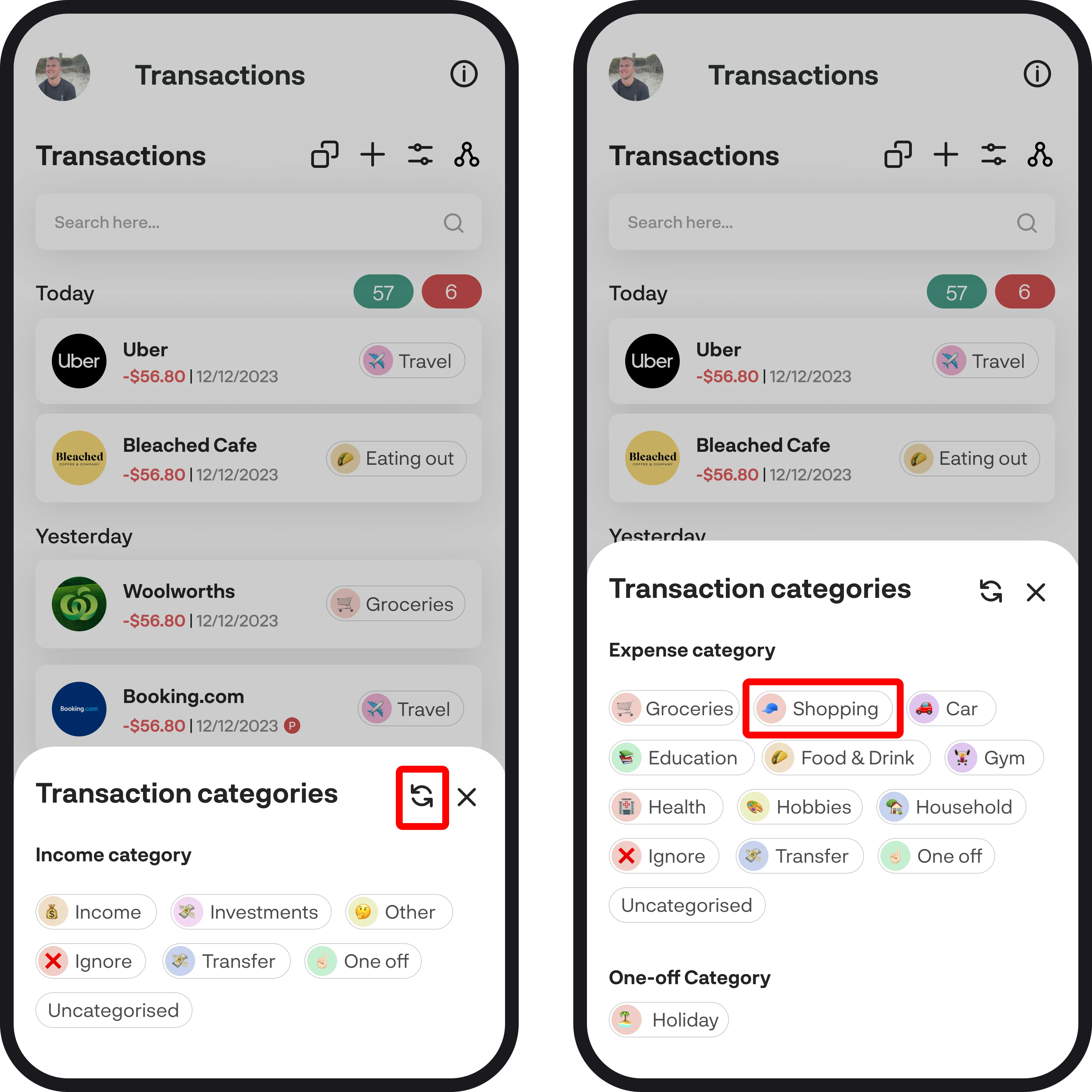
5. Manually add a transaction
If you have a transaction you'd like to add manually, such as a cash payment, you can do so by tapping the + symbol in the top right corner above the search field. Before doing this, make sure you have manually set up an account in the accounts feature, as allocating it to a connected account will not update the balance.
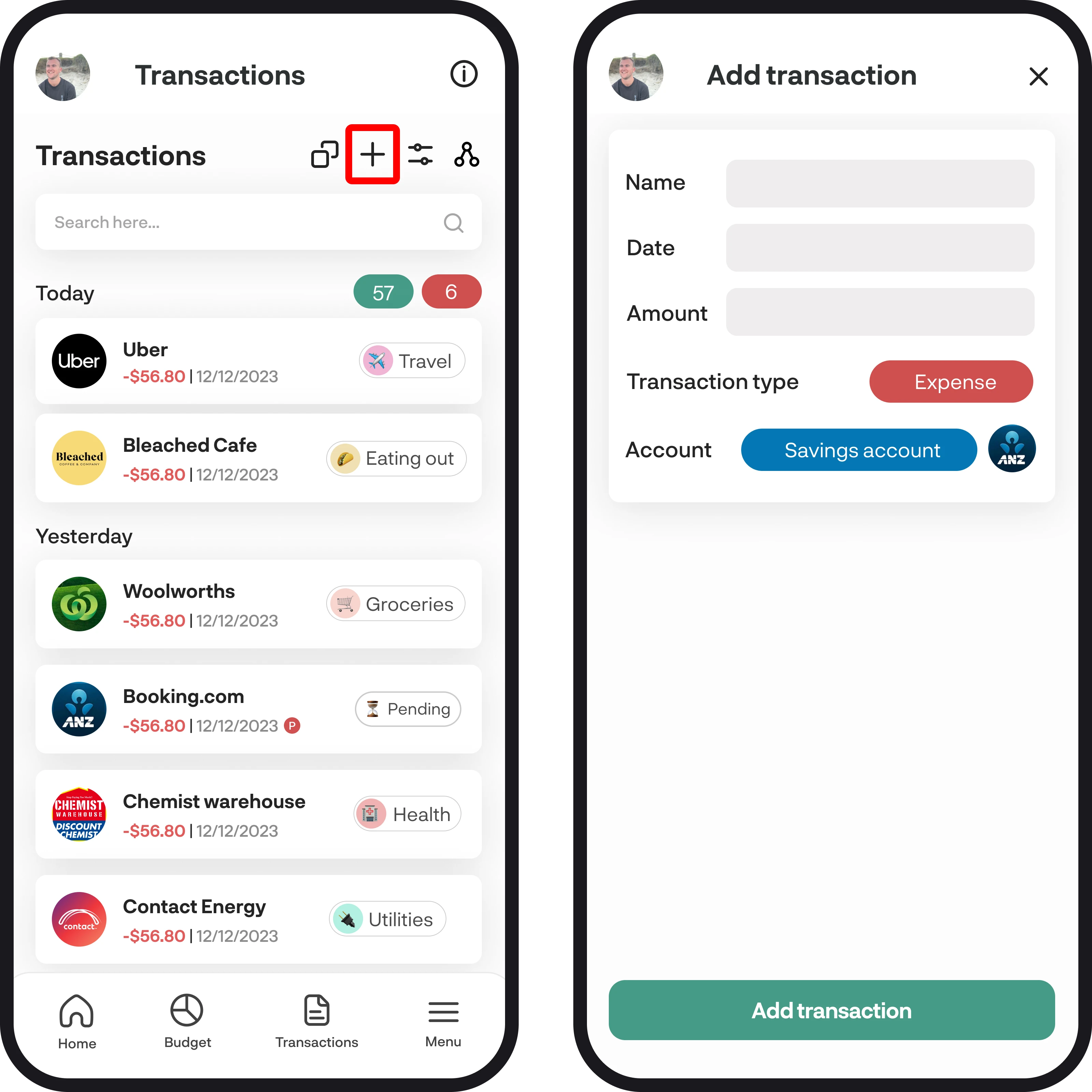
6. Filter transactions
To filter transactions, simply tap on the filter icon in the top-right corner above the search bar. This will then open the filter options by expense and income category, along with by date range as well.
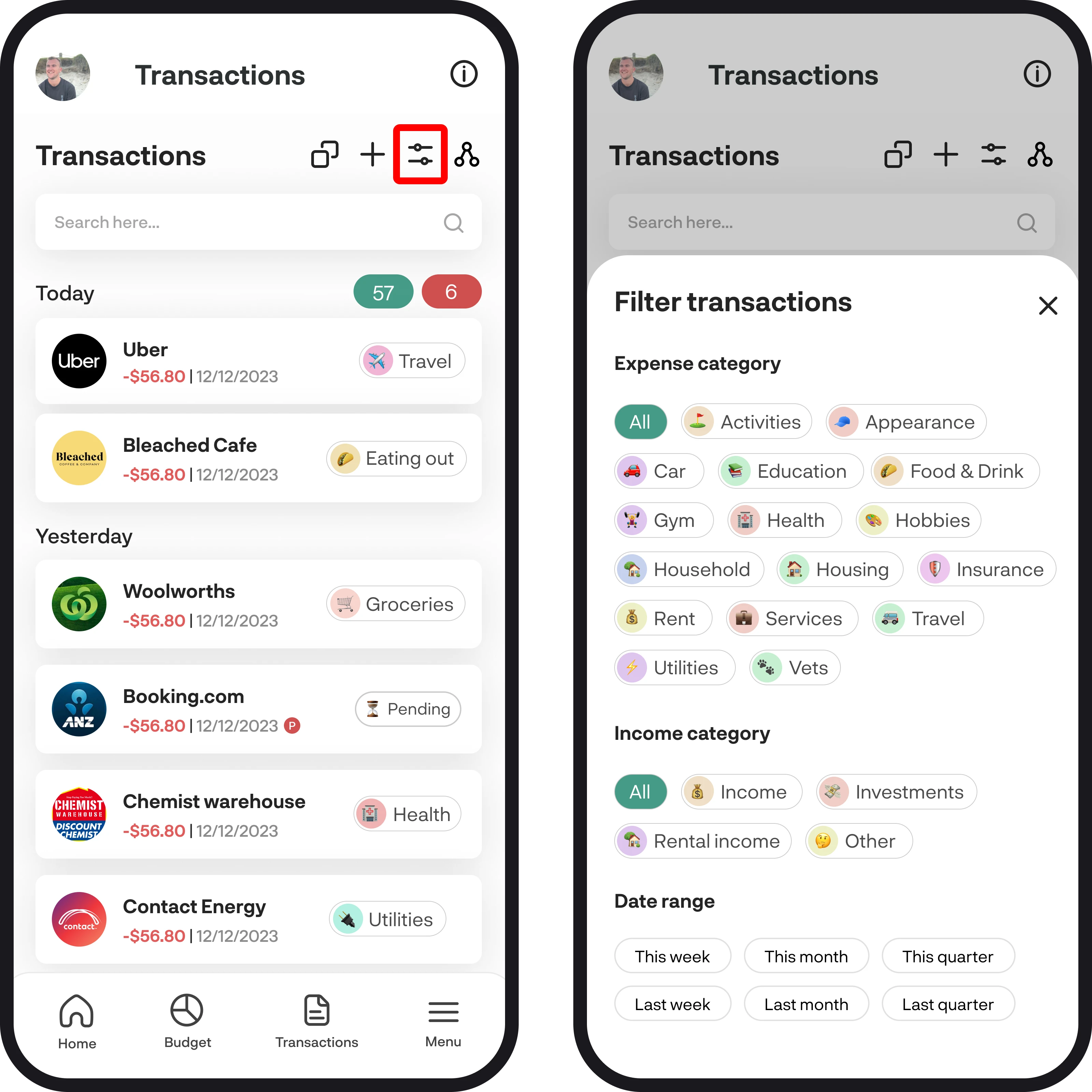
7. Categorised & uncategorised transactions
You can see how many transactions you have categorised and uncategorised by using the green and red little buttons at the top. The green button shows how many categorised transactions you have, and the red button shows how many uncategorised transactions you have. Simply select each one to filter and only show either categorised or uncategorised transactions.
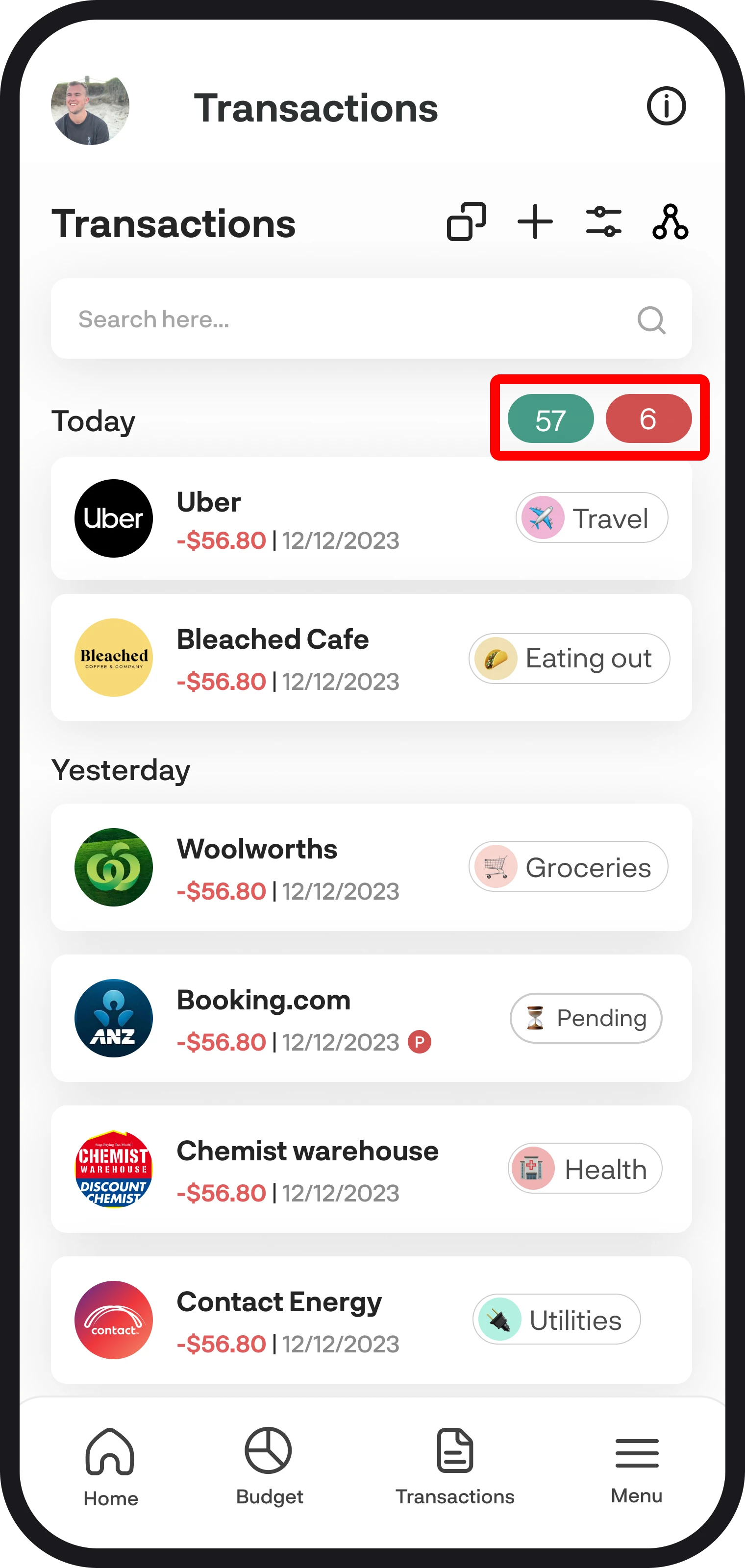
8. Bulk category changes
Bulk category changes allow you to hold down on a single transaction or select the bulk change icon and then select multiple. Once you have multiple selected and change the category of just one transaction, then all those selected will change as well.
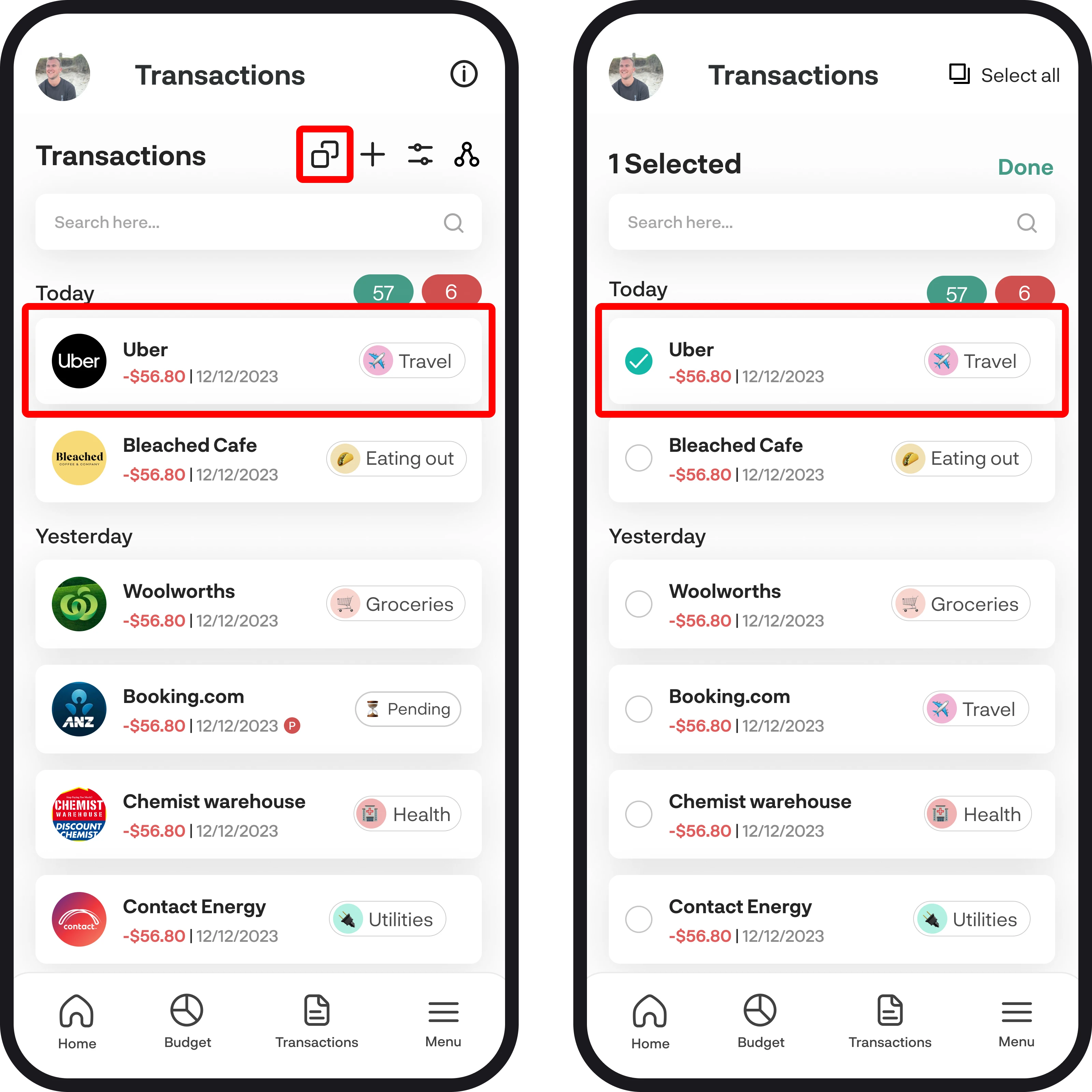
9. Search for transactions
To search for transactions, simply tap on the search input field and enter the name of the transaction you'd like to search for. Once your result shows, you can choose to categorise or view the details of your search result, or if you'd like to go back to viewing all your transactions, you can tap the clear search icon.
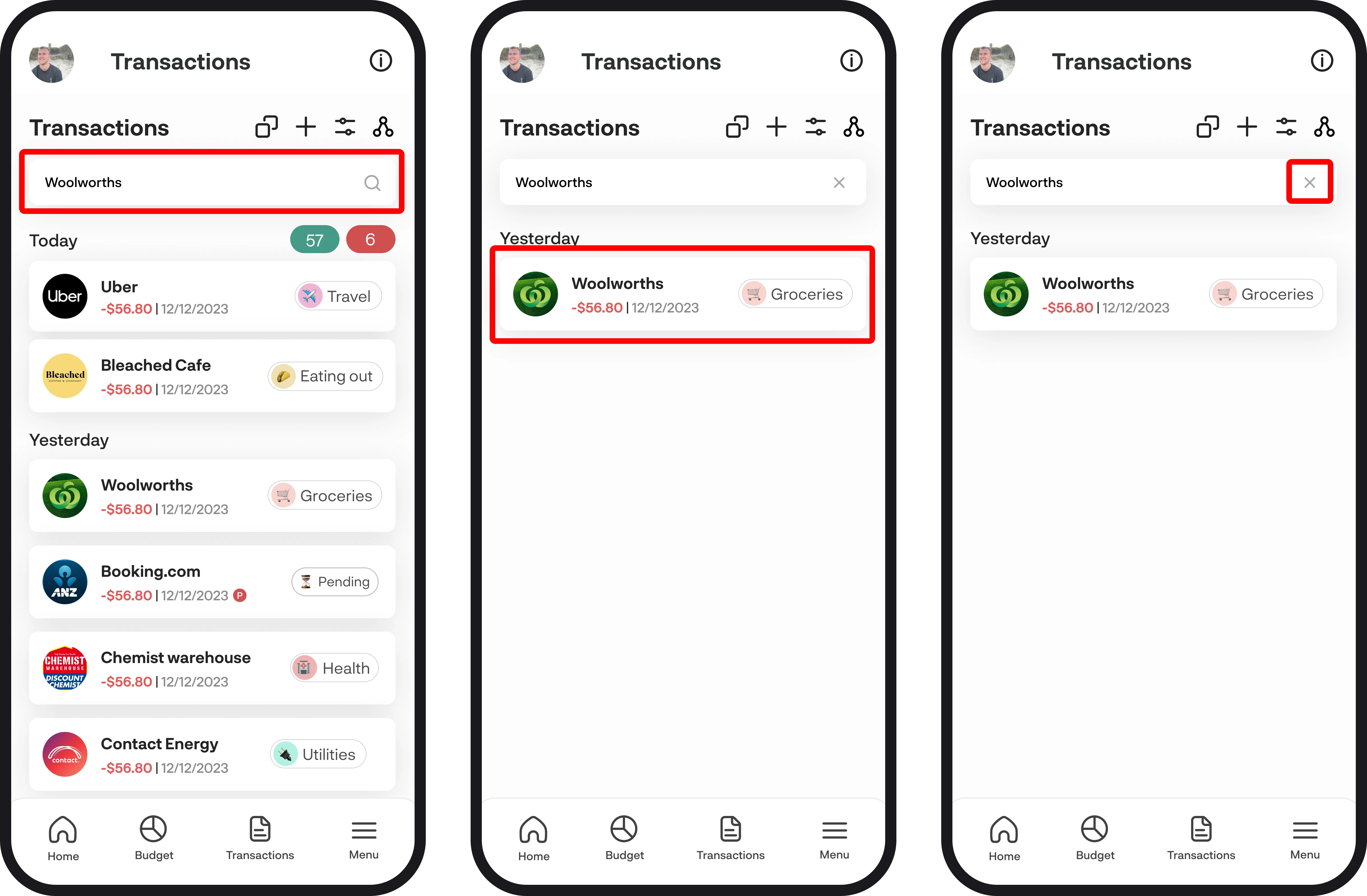
10. Transaction rules
Transaction rules allow you to set criteria based on the transaction description to automatically categorise transactions into your preferred category as they occur, along with being able to apply to current transactions as well. You can create a transaction rule by selecting the icon in the top right corner just above the search box.
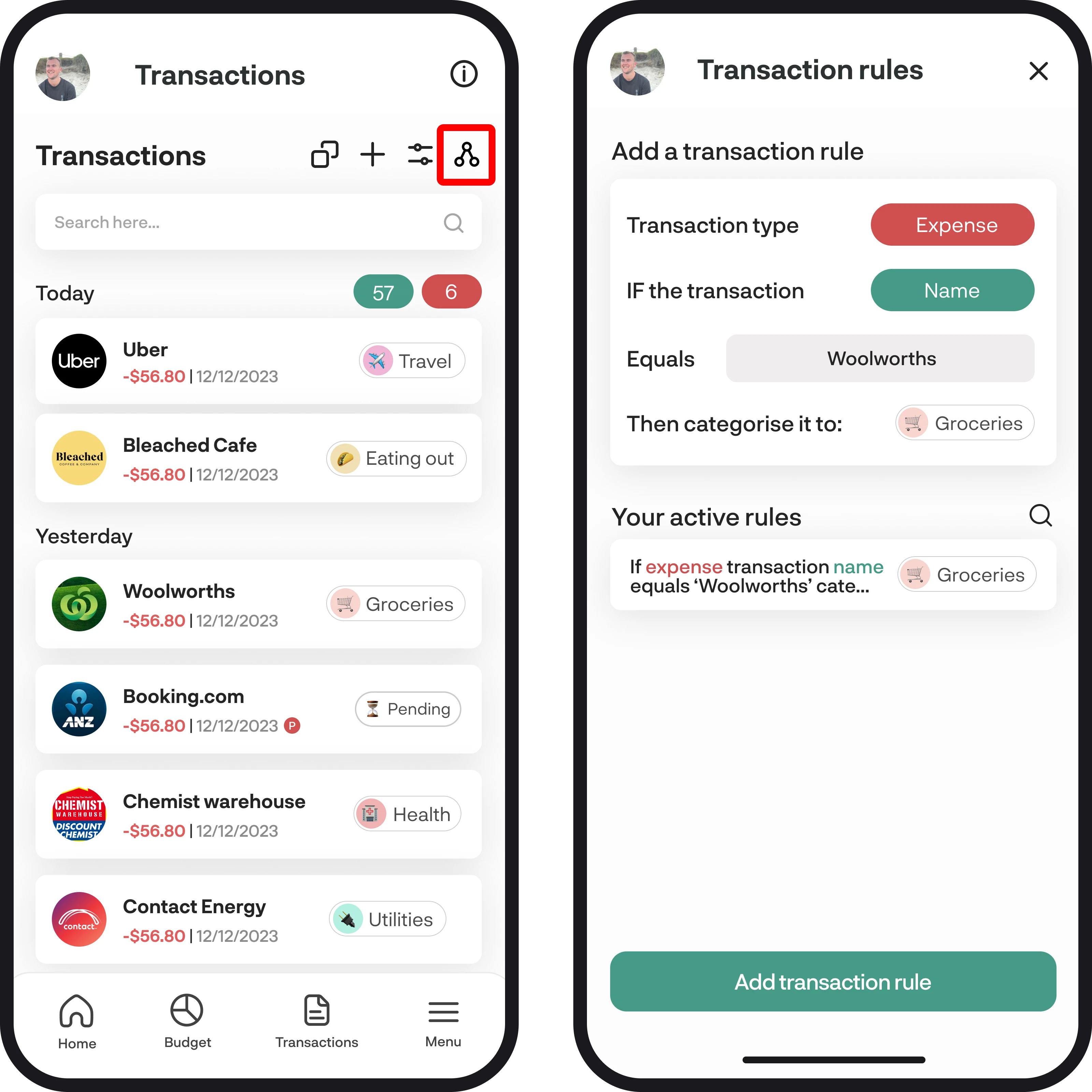
11. Transactions loading
When you connect your accounts and new transactions are loading in, we'll present a loading progress loo on the dashboard and in the transactions feature so you know exactly how many transactions have loaded in.
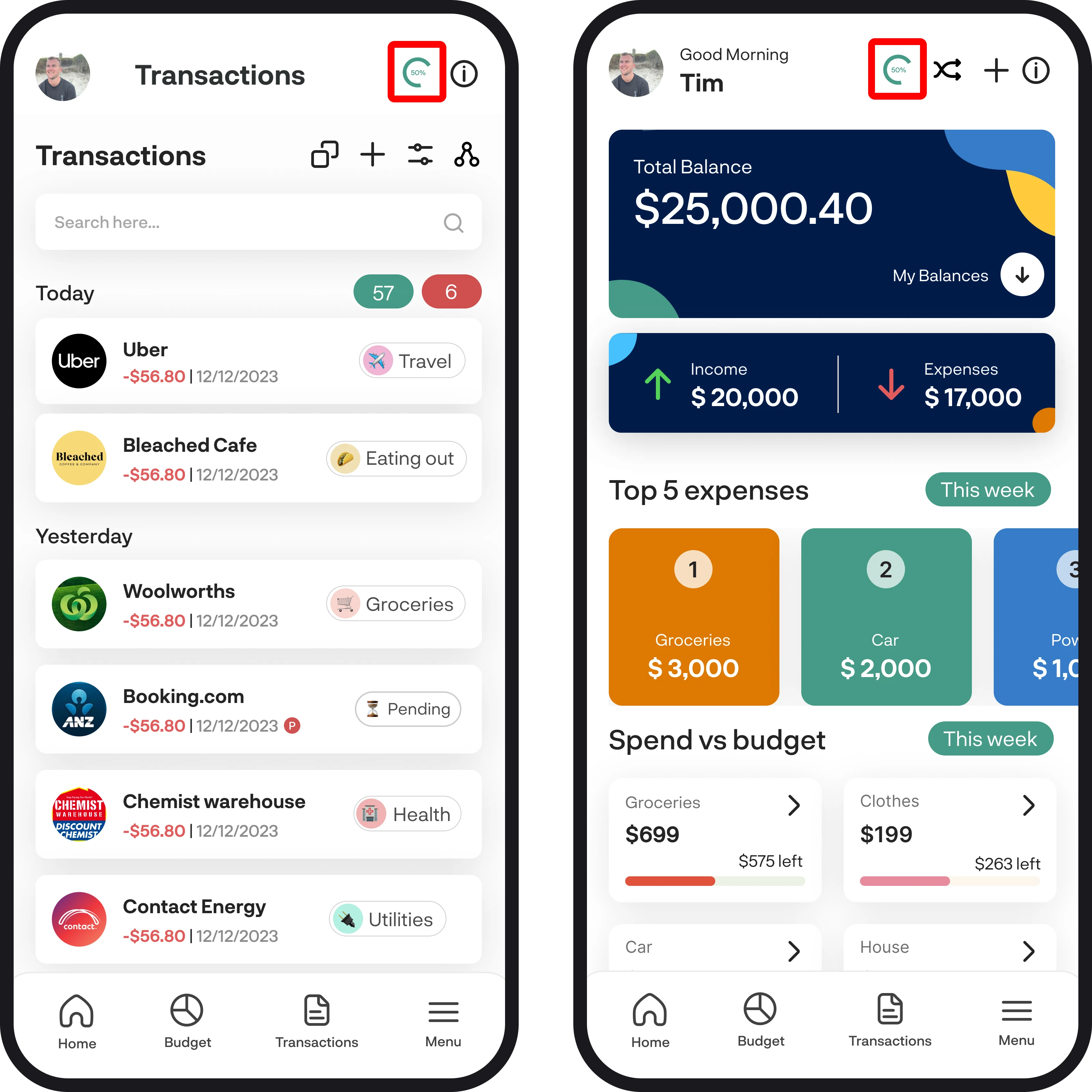
You're all ready to go 🎉
Woohoo! You're all set up and have a good understanding on how to get the most out of the transactions feature. If you run into any issues while getting everything set up, feel free to get in touch with us at hello@budgetbuddie.co.nz
